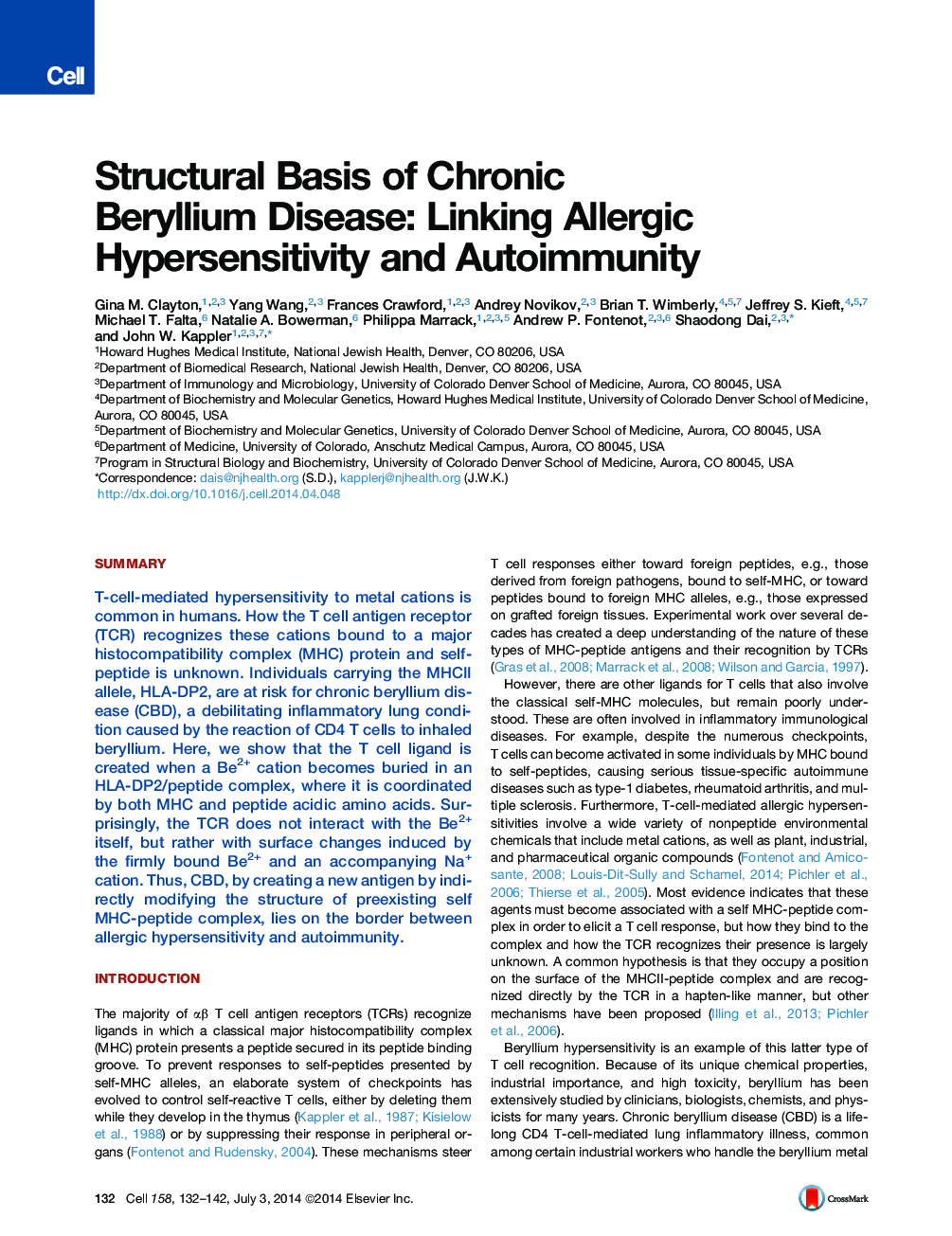| Article ID | Journal | Published Year | Pages | File Type |
|---|---|---|---|---|
| 2035293 | Cell | 2014 | 11 Pages |
•In chronic beryllium disease, T cells detect Be2+ bound to a DP2/peptide complex•Be2+ binds in a pocket containing five acidic amino acids from DP2 and the peptide•The T cell detects surface changes in the DP2/peptide complex, not Be2+ itself•This disease straddles the border between allergic hypersensitivity and autoimmunity
SummaryT-cell-mediated hypersensitivity to metal cations is common in humans. How the T cell antigen receptor (TCR) recognizes these cations bound to a major histocompatibility complex (MHC) protein and self-peptide is unknown. Individuals carrying the MHCII allele, HLA-DP2, are at risk for chronic beryllium disease (CBD), a debilitating inflammatory lung condition caused by the reaction of CD4 T cells to inhaled beryllium. Here, we show that the T cell ligand is created when a Be2+ cation becomes buried in an HLA-DP2/peptide complex, where it is coordinated by both MHC and peptide acidic amino acids. Surprisingly, the TCR does not interact with the Be2+ itself, but rather with surface changes induced by the firmly bound Be2+ and an accompanying Na+ cation. Thus, CBD, by creating a new antigen by indirectly modifying the structure of preexisting self MHC-peptide complex, lies on the border between allergic hypersensitivity and autoimmunity.
Graphical AbstractFigure optionsDownload full-size imageDownload high-quality image (432 K)Download as PowerPoint slide
